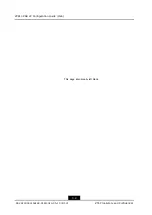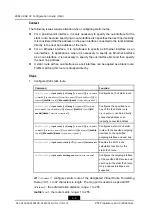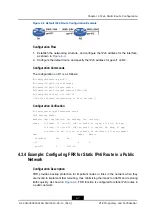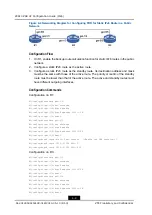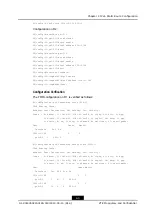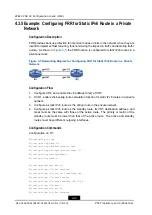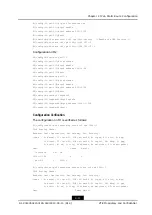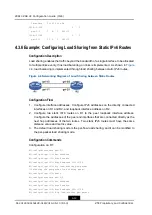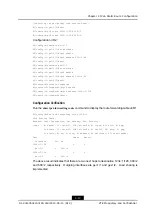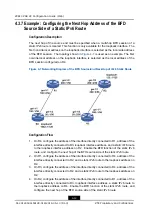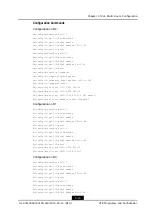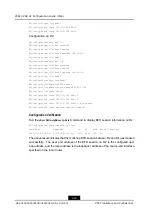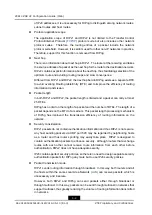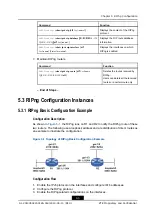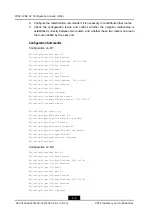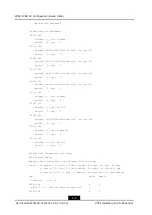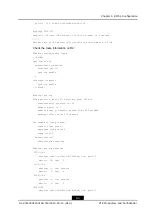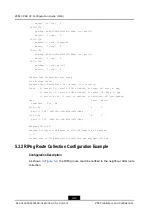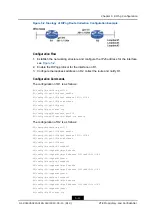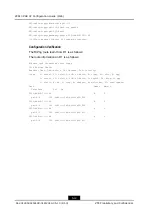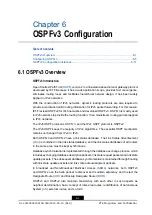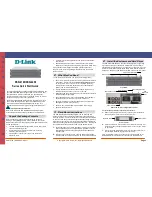
ZXR10 ZSR V2 Configuration Guide (IPv6)
4.3.7 Example: Configuring the Next Hop Address of the BFD
Source Side of a Static IPv6 Route
Configuration Description
The next hop of the source end must be specified when a multi-hop BFD session of a
static IPv6 route is created. This function is only available for the loopback interface. The
first non-link-local address on the loopback interface is selected as the local side address
of the BFD session. The topology shown in
is used as an example. The first
non-link-local address on the loopback interface is selected as the local address of the
BFD session configured on R4.
Figure 4-7 Networking Diagram of the BFD Source-End Next-Hop of IPv6 Static Route
Configuration Flow
1.
On R4, configure the address of the interface directly connected to R1, address of the
interface directly connected to R3, loopback interface address, and a static IPv6 route
to the loopback interface address on R2. Enable the BFD function of the static IPv6
route, and configure the next hop of the BFD source side of the static IPv6 route.
2.
On R1, configure the address of the interface directly connected to R4, address of the
interface directly connected to R2, and a static IPv6 route to the loopback address on
R2.
3.
On R3, configure the address of the interface directly connected to R4, address of the
interface directly connected to R2, and a static IPv6 route to the loopback address on
R2.
4.
On R2, configure the address of the interface directly connected to R1, address of the
interface directly connected to R3, loopback interface address, a static IPv6 route to
the loopback address on R4. Enable the BFD function of the static IPv6 route, and
configure the next hop of the BFD source side of the static IPv6 route.
4-14
SJ-20140504150128-018|2014-05-10 (R1.0)
ZTE Proprietary and Confidential

